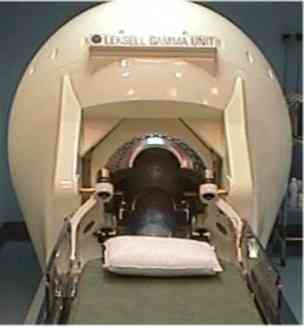
Brain Radiosurgery
Cyberknife and Gamma Knife Information

|

Brain Radiosurgery
Cyberknife and Gamma Knife Information

|
|
| Long-term results after
radiosurgery for benign intracranial tumors. Kondziolka D, Nathoo N, Flickinger JC, Niranjan A, Maitz AH, Lunsford LD. Neurosurgery. 2003 Oct;53(4):815-21; Departments of Neurological Surgery and Radiation Oncology, University of Pittsburgh School of Medicine, Pittsburgh, Pennsylvania, USA. kondziolkads@msx.upmc.edu We evaluated 285 consecutive patients who underwent radiosurgery for benign intracranial tumors between 1987 and 1992. Our series included 157 patients with vestibular schwannomas, 85 patients with meningiomas, 28 patients with pituitary adenomas, 10 patients with other cranial nerve schwannomas, and 5 patients with craniopharyngiomas. Prior surgical resection had been performed in 44% of these patients, and prior radiotherapy had been administered in 5%. The median follow-up period was 10 years. RESULTS: Overall, 95% of the 285 patients in this series had imaging-defined local tumor control (63% had tumor regression, and 32% had no further tumor growth). The actuarial tumor control rate at 15 years was 93.7%. In 5% of the patients, delayed tumor growth was identified. Resection was performed after radiosurgery in 13 patients (5%). No patient developed a radiation-induced tumor. Eighty-one percent of the patients were still alive at the time of this analysis. Normal facial nerve function was maintained in 95% of patients who had normal function before undergoing treatment for acoustic neuromas. CONCLUSION: Stereotactic radiosurgery provided high rates of tumor growth control, often with tumor regression, and low morbidity rates in patients with benign intracranial tumors when evaluated over the long term. This study supports radiosurgery as a reliable alternative to surgical resection for selected patients with benign intracranial tumors. |